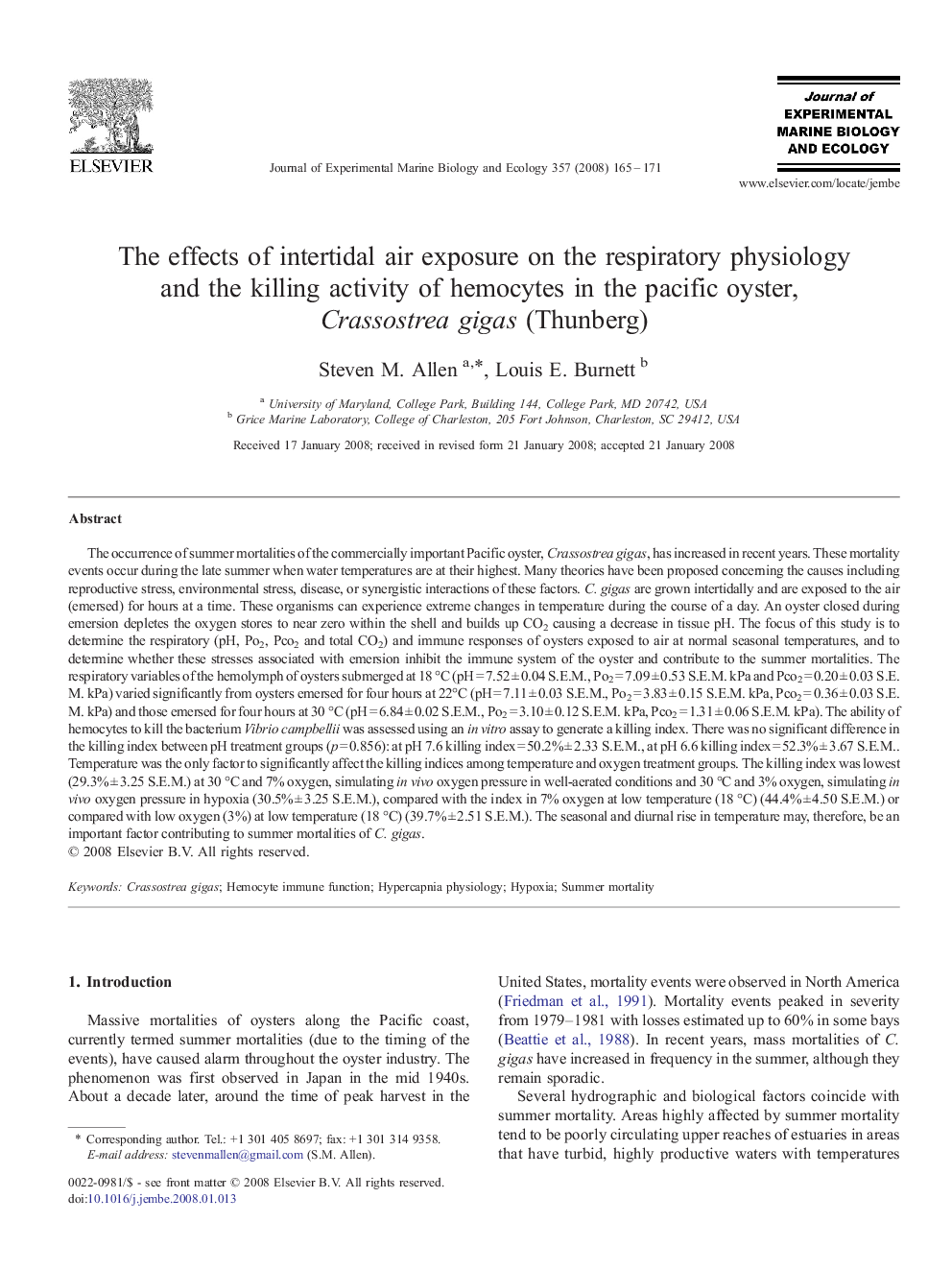| Article ID | Journal | Published Year | Pages | File Type |
|---|---|---|---|---|
| 4397334 | Journal of Experimental Marine Biology and Ecology | 2008 | 7 Pages |
The occurrence of summer mortalities of the commercially important Pacific oyster, Crassostrea gigas, has increased in recent years. These mortality events occur during the late summer when water temperatures are at their highest. Many theories have been proposed concerning the causes including reproductive stress, environmental stress, disease, or synergistic interactions of these factors. C. gigas are grown intertidally and are exposed to the air (emersed) for hours at a time. These organisms can experience extreme changes in temperature during the course of a day. An oyster closed during emersion depletes the oxygen stores to near zero within the shell and builds up CO2 causing a decrease in tissue pH. The focus of this study is to determine the respiratory (pH, Po2, Pco2 and total CO2) and immune responses of oysters exposed to air at normal seasonal temperatures, and to determine whether these stresses associated with emersion inhibit the immune system of the oyster and contribute to the summer mortalities. The respiratory variables of the hemolymph of oysters submerged at 18 °C (pH = 7.52 ± 0.04 S.E.M., Po2 = 7.09 ± 0.53 S.E.M. kPa and Pco2 = 0.20 ± 0.03 S.E.M. kPa) varied significantly from oysters emersed for four hours at 22°C (pH = 7.11 ± 0.03 S.E.M., Po2 = 3.83 ± 0.15 S.E.M. kPa, Pco2 = 0.36 ± 0.03 S.E.M. kPa) and those emersed for four hours at 30 °C (pH = 6.84 ± 0.02 S.E.M., Po2 = 3.10 ± 0.12 S.E.M. kPa, Pco2 = 1.31 ± 0.06 S.E.M. kPa). The ability of hemocytes to kill the bacterium Vibrio campbellii was assessed using an in vitro assay to generate a killing index. There was no significant difference in the killing index between pH treatment groups (p = 0.856): at pH 7.6 killing index = 50.2% ± 2.33 S.E.M., at pH 6.6 killing index = 52.3% ± 3.67 S.E.M.. Temperature was the only factor to significantly affect the killing indices among temperature and oxygen treatment groups. The killing index was lowest (29.3% ± 3.25 S.E.M.) at 30 °C and 7% oxygen, simulating in vivo oxygen pressure in well-aerated conditions and 30 °C and 3% oxygen, simulating in vivo oxygen pressure in hypoxia (30.5% ± 3.25 S.E.M.), compared with the index in 7% oxygen at low temperature (18 °C) (44.4% ± 4.50 S.E.M.) or compared with low oxygen (3%) at low temperature (18 °C) (39.7% ± 2.51 S.E.M.). The seasonal and diurnal rise in temperature may, therefore, be an important factor contributing to summer mortalities of C. gigas.
